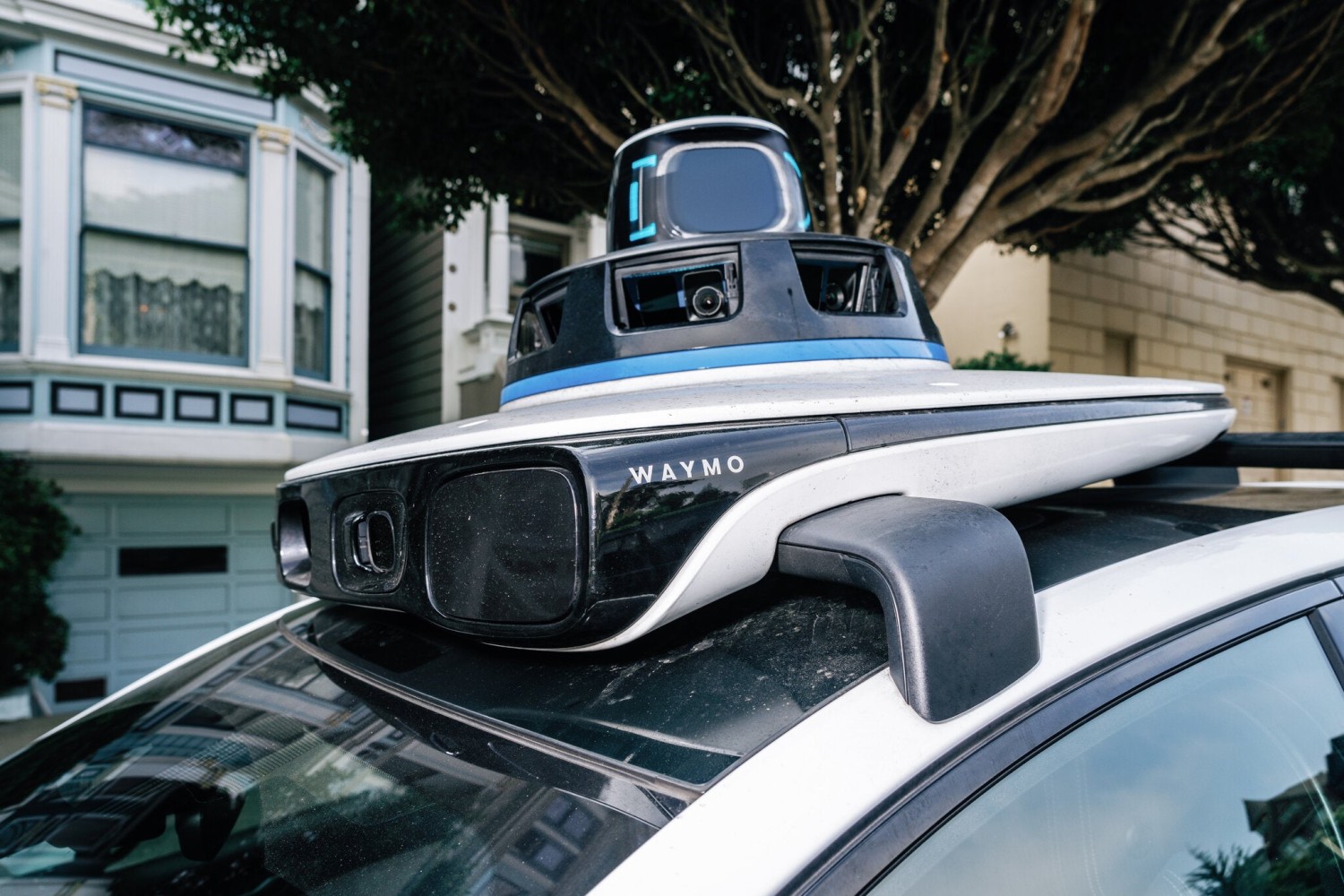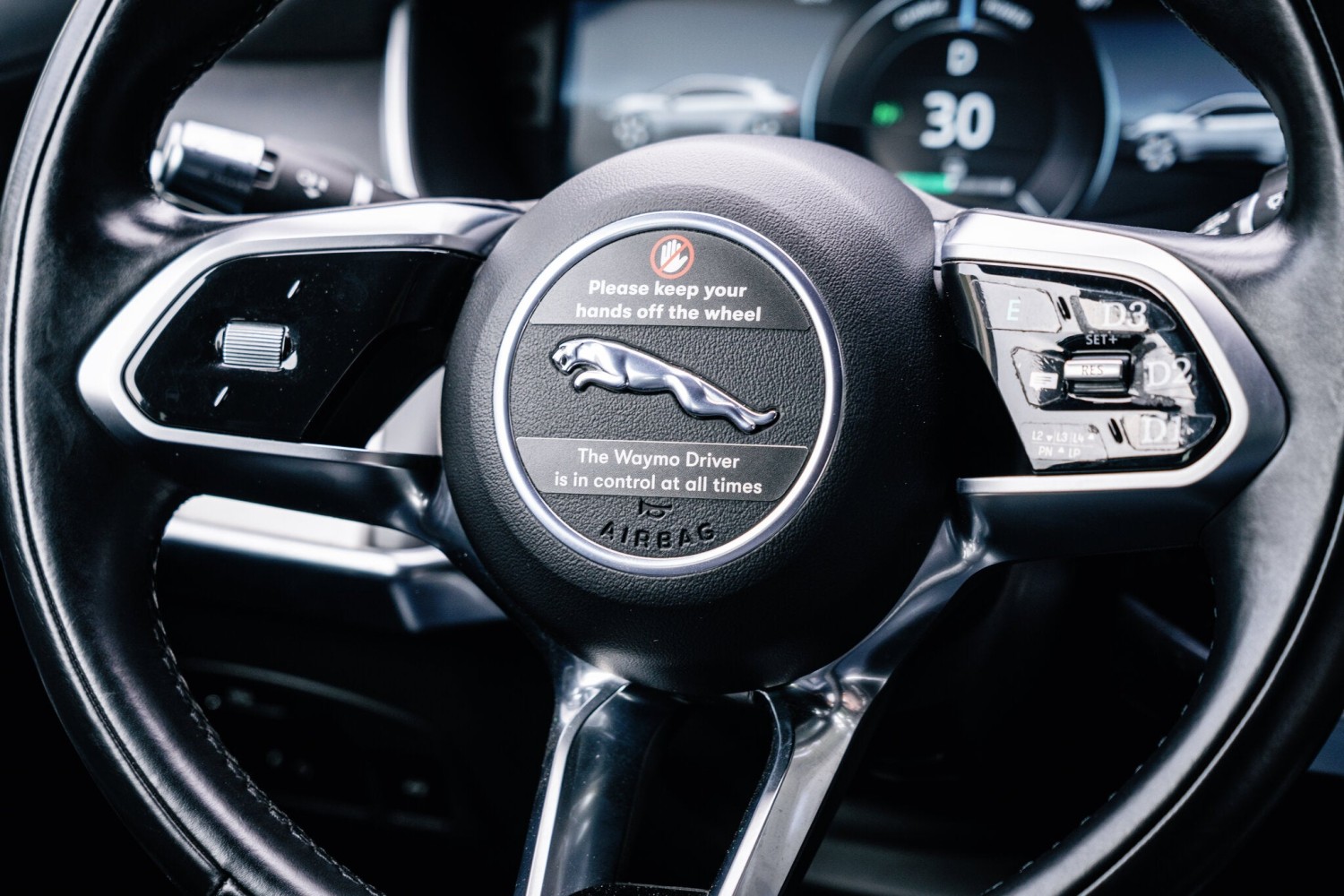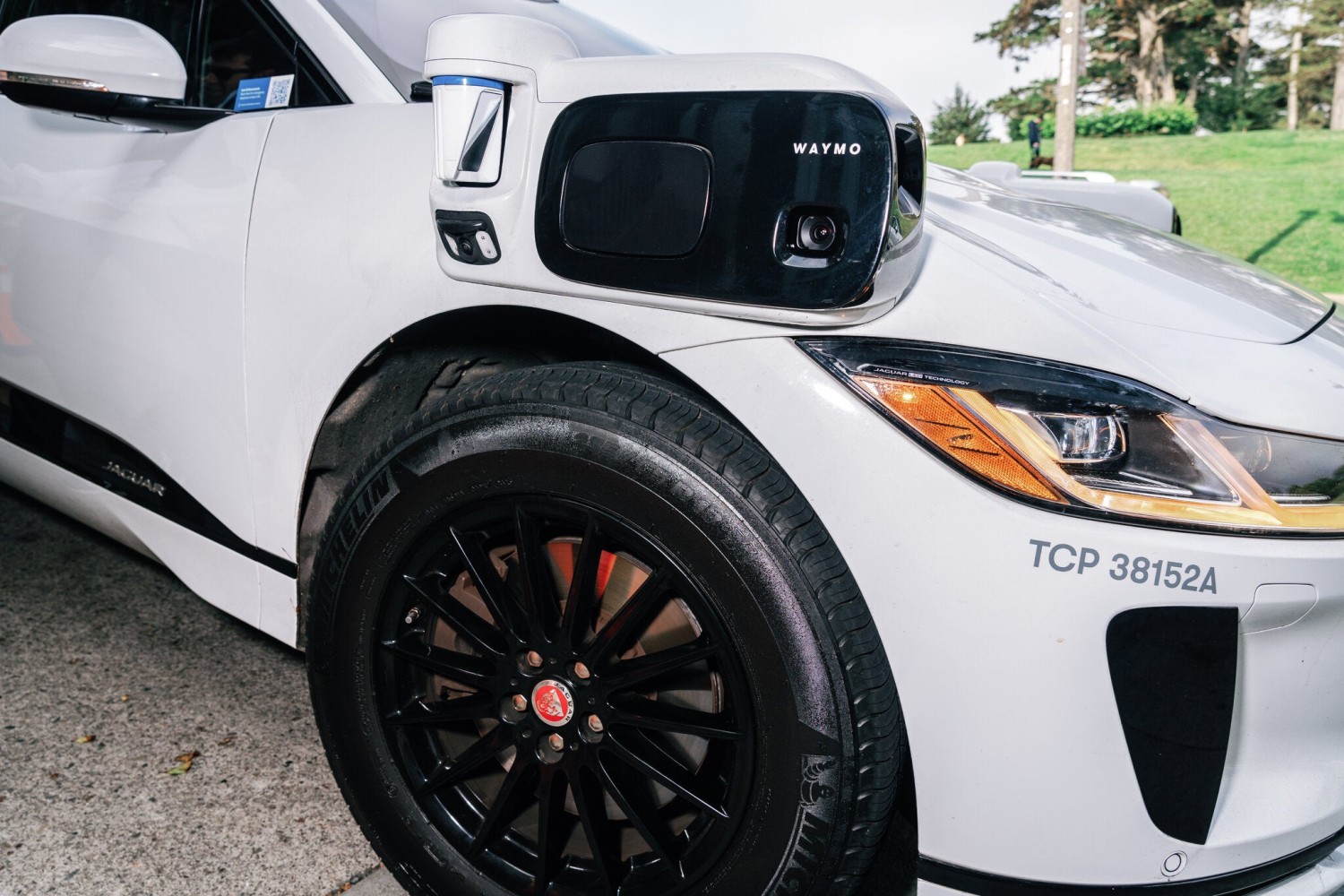This article is more than
2 year old‘This Experience May Feel Futuristic’: Three Rides in Waymo Robot Taxis
On Monday, Waymo began letting the public pay for rides in its driverless cars in San Francisco. The New York Times dispatched three reporters around the city to test the service.
Waymo began offering paid driverless taxi rides in San Francisco despite the safety concerns of some city officials.CreditCredit...Andri Tambunan and Jason Henry for The New York Times
By Tripp Mickle, Yiwen Lu and Mike Isaac
Tripp Mickle wrote this article after he and his colleagues paid for rides in three driverless taxis in San Francisco.
“Hello, Tripp,” a disembodied woman’s voice said through the speakers of a driverless taxi that was about to pick up a fare near the colorful Victorian houses known as the Painted Ladies.
“This experience may feel futuristic,” the voice said. “Please don’t touch the steering wheel or pedals during the ride. For any questions, you can find information in the Waymo app, like how we keep our cars safe or clean.”
For several years, San Francisco’s hilly and congested streets have doubled as a test track for hundreds of driverless cars operated by Waymo, an autonomous vehicle company owned by the Google parent company Alphabet, and General Motors-owned Cruise.

On Monday, despite the objections of San Francisco officials who worry the cars aren’t especially safe, Waymo’s vehicles began functioning just like paid taxis, minus the driver. For the first time, some people could book rides and pay fares for trips in a Waymo driverless car. Cruise has already been operating a limited paid service around parts of the city.
Our destination: the Beach Chalet restaurant, where San Francisco’s Golden Gate Park meets the Pacific Ocean. Waymo is offering only limited rides into San Francisco’s downtown area, so we tried to duplicate the experience a tourist might have bopping around the city in a driverless taxi.
The roughly five-mile trips were two parts “Driving Miss Daisy” and one part NASCAR. Two rides carefully avoided congestion, and one seemed to embrace it.
Waymo’s robot taxi rides began as tensions escalated over the driverless cars in San Francisco. City officials and activists are urging state officials to reverse or slow a plan for Waymo and Cruise to begin charging passengers for rides throughout the city, round the clock.
Last week, a Cruise driverless car collided with a fire truck responding to an emergency. Another Cruise vehicle got stuck in wet concrete. The week before, several Cruise cars blocked trafficin the city’s North Beach neighborhood. On Friday, state regulators asked Cruise to halve the number of vehicles it operated.
Waymo has had fewer headline-worthy troubles. In May, one of its cars struck and killed a small dog. A few years ago, a driverless Waymo car with a human safety driver operating the wheel hit a pedestrian who needed to be taken to the hospital. The company has been collecting fares in the Phoenix area for several years and now has a fleet navigating some 200 miles across that region, including to and from the airport.
Waymo’s app, Waymo One, looks and works just like Uber’s does. Riders enter their destination and get an estimated wait time for a ride. Once you enter your requests, the company dispatches from its fleet of 250 white Jaguar vehicles it operates across the city. The cars are staggeringly expensive, outfitted with high-tech sensors and cameras, and are worth as much as $200,000.


The Waymo experience can be confusing for a first timer. When the car pulled up to the curb beside the Painted Ladies, I reached for the door handle. But the handles were flush against the door and wouldn’t open. I needed to press an “unlock” button on the app. When I did, the handles shot out from the door and I was able to climb inside.
My ride was so smooth, the novelty began to wear off, turning a trip to the future into just another journey across town. The car was precise and deliberate, albeit without the flexibility or interactions you would have with a human driver. It paused for pedestrians and yielded to emergency vehicles.



Like my ride, Yiwen’s trip was downright sleepy. The car was dryly precise. It never exceeded the speed limit, used its turn signal well in advance of a lane change and yielded to pedestrians in crosswalks whom speedy drivers might disregard.
The steering wheel twisted and turned on its own. I wondered what would happen if I touched the wheel, so I grabbed it as the Waymo merged from one lane to another. The car ignored me and drove on.
Yiwen’s ride began with a complication: an accident, not involving the Waymo, next to a parking lot at Marina Green. Police cars were blocking part of the roadway, so the Waymo car quickly changed its route. Instead of taking the main street, the Waymo car drove onto a nearby residential street and went around the accident.
The cars were all quick to respond to pedestrians. My ride patiently waited at intersections and crosswalks as people walked their dogs, sipped coffee and rode their bikes toward Golden Gate Park.
But at the top of a hill, Mike’s car recognized a man crossing the road in a crosswalk but kept creeping forward slowly while it waited for him to get to the other side. The pedestrian gave the car — and Mike — an annoyed look.


The cars offer more bells and whistles than an Uber or a taxicab. Touch screens in the back seats are outfitted with a button to turn on music. There are a series of playlists to choose from, including jazz, classical, rock and hip-hop.
Mike wanted to listen to a punk band called Armed and tried to find the group’s music on the Waymo app. But to do so, he needed to download an app called Google Assistant and request a specific song by speaking into his phone’s mic. His first attempt brought up the wrong band, and his second brought up a live version of the song he requested.
Instead of taking the most direct route to the beach down a congested street, my Waymo crossed Golden Gate Park and drove down a less congested street, but that added a few minutes to the journey. It puttered most of the way at 29 m.p.h. — one mile per hour under the speed limit — and deferred to other drivers. At one point, it sat for a few minutes behind a car waiting to turn left rather than merging into the right lane to go around that vehicle.
My Waymo pulled into a parking lot six minutes later than it had initially predicted. It glided through the parking lot to a small, empty space where the map on the touch screen showed a circle. Once it pulled into the circle, it stopped.
“You’re here,” the woman said. “Please make sure it’s clear before exiting.”
As I climbed out of the car, it filled with the meditative electronic music that had greeted me at the start of the drive. Mike arrived shortly after me.
Yiwen’s car was less direct. At the beginning of her journey, it told her that there would be a two-minute walk to the restaurant from her drop-off point. The car reminded her of that as it arrived and encouraged her to use the app to guide her as she walked to the Beach Chalet.
The Waymo rides were affordable, ranging from $18 to $21, about the same as an Uber. It’s going to take years — if not decades — for Waymo to recoup the billions of dollars that it has invested in its service. Though there’s no driver, each ride is supported by staff at a Waymo site that can be summoned if a car runs into trouble.
But that’s Waymo’s problem. For the rest of us, it’s easy to forget no one is behind the wheel of the robot taxis. The only reminder comes as you start to thank the driver before climbing out of the car. A glimpse at the empty front seat reminds you that you’re all alone.
Tripp Mickle covers technology from San Francisco, including Apple and other companies. Previously, he spent eight years at The Wall Street Journal reporting on Apple, Google, bourbon and beer. More about Tripp Mickle
Yiwen Lu is a technology reporting fellow based in San Francisco. More about Yiwen Lu
Mike Isaac is a technology correspondent and the author of “Super Pumped: The Battle for Uber,” a best-selling book on the dramatic rise and fall of the ride-hailing company. He regularly covers Facebook and Silicon Valley, and is based in San Francisco. More about Mike Isaac